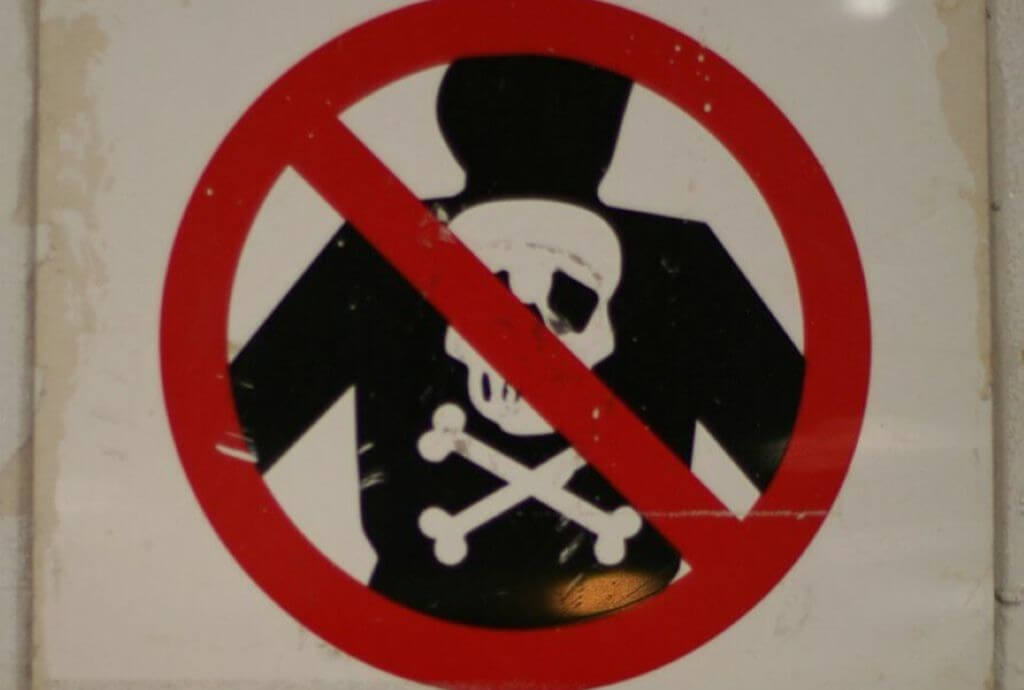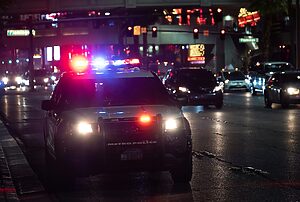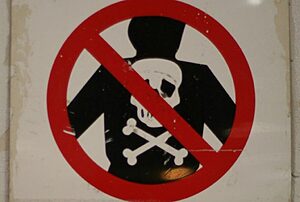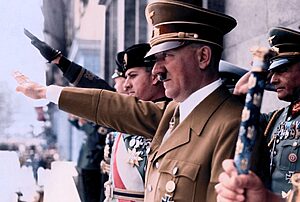Synopsis
A damning document for NZTA Waka Kotahi and other authorities reveals critical safety issues with electric vehicles (EVs), including a lack of protocols for managing EV fires.
Despite plans to electrify public transport, no strategies exist for EV fires in critical areas like tunnels. Maritime New Zealand (MNZ) lacks guidelines for ferrying EVs, and KiwiRail’s measures may be insufficient against ultra-hot, toxic EV battery fires.
Advisories stress the need for large water volumes to cool EV batteries and full PPE for firefighters. EV fires pose risks of high-voltage shocks, jet flames, toxic gases, and re-ignition. Insurance costs may rise due to EV charging risks. Consultants suggest banning EVs from underground car parks, but OIA requests reveal no data supporting claims that petrol cars are more fire-prone.
NZTA and FENZ’s lack of comprehensive data renders claims that EVs are less likely to catch fire as “fake news.” FENZ data shows over 20% of vehicle fires involve EVs. An American study found EVs have a higher fire risk than ICE vehicles, mainly due to battery pack issues. OIA documents suggest New Zealand’s green energy transition may lack thorough safety assessments, potentially driven by political ideology.
This report is a reminder of the dangers beneath New Zealand’s push for an electric future.
EXCLUSIVE: CENTRIST DEEP DIVE
A damning discussion document on fire safety issues with electric vehicles on our roads, bridges, tunnels, carparks and car ferries reveals the new technology poses a serious risk to lives and infrastructure and that Labour/Greens forced EVs on the public without doing a single safety analysis.
The document, by engineering consultancy Rationale NZ and presented to a briefing attended by top analysts of NZTA Waka Kotahi, Maritime NZ and Fire and Emergency NZ in October 2022, has just been exclusively released to the Centrist under the OIA, and it pulls no punches.
Among a list of 61 public safety issues identified, Rationale says there are some major concerns, like no ability to move burning EVs:
“It is currently unknown how to move an “incident” away from key points in the network (e.g. tunnel, bridge motorway) to reduce/prevent economic and social impact.
“With an incident in tunnels, vehicles need to be removed asap to preserve infrastructure.”
With the Government pushing public transport to go electric, no safety plans have been prepared:
“There is limited to no emergency procedure for heavy vehicles or buses.”
Indeed, some bus companies are allowing e-bikes and scooters on board:
“People want to bring personal mobility vehicles on board public transport. We don’t know if they are damaged or not, mobility vehicles could ignite… Location of personal vehicles (ebikes/scooters) e.g. bus, train, office, taxi – potential for ignition if damaged.”
The public assume that emergency responders are highly trained to combat EV fires, but the Rationale discussion paper says that isn’t the case.
“Our people are not trained for dealing with these fires. No fit for purpose first responders training.
“No standard operating procedures, across the three emergency services, for how to respond to EV fires.”
There’s no way for agencies to coordinate their response to a major EV fire incident:
“Information sharing is lacking so no one has a full picture across the system. Fire, police, towers [tow-trucks], mechanics, Waka Kotahi (trends, flags, recalls) are all separate.”
On the Cook Strait and other ferries, they are flying blind:
“Haven’t done exercise on how to extract a burning vehicle from a ship. Vessels don’t necessarily know the fuel type of the vehicles are onboard.”
You’d think they have a plan, but they don’t:
“Little regulations in New Zealand on ships/vessels. What to do with storage, extinguishing capability, private vehicles requirements e.g. vehicle with heaps of batteries in cargo. No requirement to declare. No limit.”
And for ferry operators, office carparks and homeowners, there’s another potentially deadly implication: EV fires generate explosive hydrogen gas. In the open air hydrogen quickly floats away, but in enclosed spaces like ships, tunnels, your garage at home or in your office basement carpark, a hydrogen reaction is possible.
“58% of gases from battery are hydrogen, this can make it explode.”
This prompted Rationale to raise a warning flag about hydrogen-powered vehicles as well:
“There are issues with hydrogen fire in tunnels. Do we potentially ban hydrogen vehicles in tunnels?”


Rationale warns that lithium batteries can be internally damaged by the physical shock of a minor collision:
“Vehicles involved in minor crashes/incidents that are not reported may ignite post event.”
The briefing notes that American insurance companies are starting to deny claims for house fires caused by EVs:
“In the US house insurance is null and void if vehicle is parked in garage or charged.”
In New Zealand, “Insurance has provided limited communications”, and overnight charging is a major risk:
“Australian research shows 28% of issues are whilst charging and no one is monitoring it.”
Companies, warns Rationale, could find themselves legally liable if their EV malfunctions and burns down a worker’s home:
“Charging of company vehicles at home needs advice. Charging, storing and driving non-ICE company vehicles requires guidance.”
Among the recommendations, officials were asked to consider banning EVs and hydrogen vehicles from underground carparks, in case an EV fire traps other motorists in the danger zone:
“Electric and hybrid vehicles banned from underground parking buildings.”
In another proposal, police would be given powers to red-sticker EV’s involved in minor collisions if they felt the battery needed expert checking for hidden damage.
NZTA Waka Kotahi made a similar point in a communication to bus operators, asking them to place signage on areas housing battery packs:
“The interest in battery locations is primarily if these may have been impacted in a collision with another vehicle, so that the risk can be identified.”
HIGH RISK ON FERRIES
Maritime New Zealand, responsible for safety regulations on ships, revealed in an email as recently as September last year that “As far as I know, there’s no formal position/guidance from MNZ on the carriage of EVs.” The email noted that some “class societies” had issued warnings, but the International Maritime Organisation was still grappling with the rapidly evolving problem.
“Formal discussions are due to begin 2024 and [MNZ official] Ian Lancaster may have more details about this. Ian may also have an idea of what KR [KiwiRail] are planning for their new builds.”
The IMO issued interim safety guidelines in 2019 but Anna Nissen of MNZ wrote in a September 2023 email ferry operators had missed the memo:
“I’ve received an observation regarding EV’s on Ro-Ro’s and through conversations it’s become apparent that the industry aren’t aware of the current IMO guidance on the carriage of EV’s.”
Centrist sought information from Kiwirail and was given no data on what fire safety innovations were planned for the now-cancelled megaferries. However, KiwiRail Government Relations manager Dave Allard told us:
“The growing number of electric vehicles and the risks associated with them is something KiwiRail has implemented controls for.
“These controls include fire blankets designed to deal with EV fires at our terminals and on our ferries, targeted training for staff on EV risks and fire response, using thermal imaging cameras onboard our vessels along with monitoring new developments in EV safety to ensure we have considered the most appropriate measures.
“In addition to this we regularly monitor and provide feedback to regulators on alternative fuelled vehicles legislation. We have implemented several policy changes on board our present fleet to mitigate risks caused by increasing number of EVs. These include no charging of EVs on board, no shipment of damaged EVs due to the increased fire risk they pose, limiting the carriage of EVs on Car Carriers, and empowering the ships’ Masters to reject carriage of any unsafe EVs (damaged or modified, etc.).
“This is all in addition to the fixed and portable firefighting equipment already on the ships, which
includes:
- Fixed detection systems over all areas of the ship
- Fixed Fire Fighting Systems – Drencher Systems
- Fixed water cannons and water curtains to cover outside spaces
- Specialist firefighting equipment to help attack vehicle fires
- Breathing Apparatus sets with capability to self-replenish air supplies
- CCTV systems on car decks
- Regular fire rounds conducted by crew members
- Fixed CO2 smothering systems.
All that sounds impressive, until you realise that fire blankets are useless if the car is burning brightly by the time the ship’s crew have donned firefighting gear and fully self-contained breathing apparatus because it will be impossible to get close enough. Nor does CO2 smothering work on EV batteries, and the drencher systems can’t get to EV batteries which are underneath EVs.
In an email dated 6 February 2023, Maritime NZ deputy chief technical advisor Kenny Crawford drew his staff’s attention to a 2022 safety advisory from the UK for roll-on/roll-off (ro-ro) ferries.
The key points from the UK make grim reading. It may be too hard for fire crews to get close to a car burning at 4000C:

“The decision to send crew to engage in manual firefighting activities should be carefully considered, especially where there is already fire spread to nearby vehicles, limited visibility or other hazards that would increase the risk to crew undertaking firefighting.
“In case of fire involving the Li-Ion batteries only water supplied in large quantities can cool the batteries. It is possible that this will have to be manually applied as the pressurised fixed water-drench in the vehicle spaces may not satisfy the fire suppression needs for electric vehicles due to the limits of the scope of the spray, though it will help to slow the spread of fire. The use of water monitors to provide water to the vehicle is recommended where available.”
Another complicating factor for passengers and crew on ships, and for that matter anyone downwind of an EV fire, is that the gases are so corrosive and toxic they can even burn through firefighters’ PPE:
“Responders should always protect themselves with full PPE, including a self-contained breathing apparatus (SCBA), which should be worn whenever at risk of exposure to the smoke from an electric vehicle battery fire, and take appropriate measures to protect crew and passengers downwind from the incident. Muster points should be used that are not exposed to smoke where practicable.
“Procedures should be developed for decontamination of firefighters and handling of contaminated clothes and equipment after any firefighting operation where there was exposure to smoke from an electric vehicle. The smoke produced by a burning electric vehicle may contain hydrogen fluoride, a hazardous substance that may penetrate protective clothing. It is highly corrosive and toxic and will cause chemical burns if it permeates through clothing and comes in to contact with skin.
As such the procedures for dealing with clothing and equipment exposed to battery fires may be more onerous than those exposed to traditional vehicle fires. Crew supporting firefighters in removal of their firefighting PPE should also be equipped with PPE to avoid skin contact with the firefighters clothing and equipment.”
It’s becoming pretty obvious that the amount of firefighting resource required to fight an EV fire is magnitudes higher than needed for ICE car blazes. As the proportion of EVs on the roads grows, the cost of car and house insurance will go through the roof to pay for the much larger fire crew attendance and time taken (EV fires can burn for four hours whereas a petrol fire is out in ten minutes, freeing firecrews up for the next emergency). Car insurance premiums will skyrocket in particular because of the massive repair costs for EV’s involved in a routine fender-bender, even if they don’t catch fire.
In mid-December just gone, Maritime New Zealand became aware of new ferry safety advice from
its counterpart across the Tasman, the Australian Maritime Safety Authority, warning that “New
risks identified in relation to BEVs”, those risks including:
- High voltage shocks
- Direct jet flames
- Fires develop in intensity quickly and rapidly reach their maximum intensity (typically within 2-3 minutes)
- Toxic gases
- Gas explosion (if the released gas accumulates for a while before being ignited)
- Long lasting re-ignition risk (can ignite or re-ignite weeks, or maybe months after the provoking incident)
- Once established fires are difficult to stop/extinguish
- Thermal runaway
AMSA now advises ship crew to stay clear of burning EVs:
“If a BEV fire has broken out and has taken hold, the crew should undertake appropriate firefighting and emergency action from a safe distance. The crew should not approach the fire unless they have specialist protective clothing and firefighting training.”
FACT-CHECKING AN EV FIRE MYTH
It’s often said in the media that petrol cars are far more likely to catch fire than EVs. It might not be true.
NZTA Waka Kotahi principal engineer Don Hutchison told a colleague asking about the “standard response” on EV safety, “We don’t have much to add other than we understand that the Fire Service statistics show that a battery fire is a lot less likely than a petrol or diesel fire.”
However, in an Official Information Act release to Centrist, FENZ admitted it has never collected that statistical information.
We posed a series off questions designed to work out how common EV fires are in NZ and, more importantly, whether they are more likely to spontaneously combust than ICE cars:
- The total number of motor vehicle fires attended in the last 24 month period for which
complete data is available - A breakdown into how many of those fires featured lithium-powered transport (EVs,
electric scooters) - The total number of house or structure fires where a lithium battery or charger was
deemed to be the proximate cause - A breakdown into how many house or structure fires were attended in the same period and
deemed to be caused by a parked ICE vehicle switched off (eg, not an ICE car crashing into
a house resulting in fire) - How many incidents of any kind were deemed to be caused by spontaneous combustion
(ie, no other known contributing factor) of a switched off or charging lithium-powered
transport, or lithium-powered appliance or device (eg laptops, phones, tablets, cordless
electric power tools etc) - How many incidents of any kind were deemed to be caused by spontaneous combustion of
a switched off ICE vehicle or power tool (eg, chainsaw, line trimmer, lawnmower etc)
FENZ spokesman Aidan Saunders replied, confirming “we do not record or categorise
incidents for questions 4-8.”
You would think the Fire Service would want to know exactly what its risk exposure was to EV and other lithium fires, but based on their OIA response nearly two years after Jacinda Ardern and James Shaw announced NZ was aiming for EV dominance of car sales by 2035, FENZ has never asked the hard questions by standardising its incident report checklist.
If the Fire Service is not collecting data on EV fires, that means they can’t actually prove that EVs are less likely to catch fire. It’s “fake news”.
Saunders gave us some data, but admitted that FENZ is “unable to confirm the data provided to you is an accurate total of the number of incidents that have occurred.”
So what data did they give us? The total number of car (mobile property) fires from any cause, Q3, is reliable data, and the answer is 1961 car fires in 2022, 2414 car fires in 2023, and 216 car fires in the first month of 2024.
Of those mobile property fires, which FENZ says will also include e-bikes and electric scooters because FENZ data collection is so bad they don’t separate out battery EVs from hybrids or scooters, only 35 vehicles spontaneously combusted over the past two years.
Two of those where definitely EVs of some kind, but the type of vehicle is not recorded for the other 33 because FENZ didn’t bother checking.
However, we did.
A search of news articles reveals:
2022
2023
- Pakuranga EV fire
- Wellington e-scooter fire
- Tesla fire Auckland Harbour Bridge
- Dunedin EV fire
- Wellington e-bike fire
So, if the Fire Service recorded 35 spontaneously combusting vehicles in two years, and we can find eight incidents over the same period that meet the FENZ definition of an electric vehicle, that suggests 23% of all vehicles bursting into flame without cause (ie, no crash involved) were EVs, based on the only data FENZ has.
And given that EVs only make up 2.38% of the New Zealand vehicle fleet, this rough number-crunching of Fire Service data indicates EVs may be 10x more likely to randomly catch fire than petrol cars.
Why is this important? The key word is randomly. All of us understand why an ICE car might catch fire in a crash. We also understand why poor maintenance or electrical faults might cause fires (something that affects EVs too).
What we find disturbing about randomness is the unpredictability. An EV fire on the Harbour Bridge or Waterview Tunnel at 3am probably won’t be a problem, but if fire breaks out in bumper to bumper rush hour traffic at a standstill, with no way for other motorists to escape, it’s a whole different scenario. An EV can be fully alight in just two minutes.
Flame jets of 1.5 metres have been measured shooting out of batteries, easily capable of igniting the tyres or fuel tanks of nearby vehicles at a standstill. The world’s road tunnels have been tested to see how they cope with “an” EV fire under ideal conditions, but they haven’t been tested to see whether the tunnel can survive a 20-car conflagration.
“This is probably a dumb question,” NZTA’s Peter Brown asked a colleague when last year’s Tesla fire on the Harbour Bridge made the news, “but have we developed any protocols around dealing with EV fires for AHB and tunnels?”

One of the big problems for first responders is figuring out what they’re dealing with. Currently there’s no standardised system that tells them whether a vehicle is electric. NZTA planners floated the idea of using sites like Carjam.co.nz:
“Subject: Potential data source for emergency services
“I was doing a bit of multi-tasking while on the call just now looking at the Carjam system which is free for certain information. The data feed for this free service is from MVR but other information is available at cost.
“I was wondering if this data source could be trimmed and reformatted to just return vehicle fuel type when a plate number is entered. This data source could then be made available to all emergency services but would need to supported by the various emergency service call centres.
“I imagine all services have radio contact with their call centres that would avoid the need to have internet coverage and some sort of tablet to access while at incident scene.
“Try a couple of plate searched for hybrid and EVs PEY763 and LUB106, it looks like we capture and record petrol hybrid and hybrid in both fuel type and sub model.
Ian Baggott
Kaitohutohu Mātāmua – Principal Advisor- Environment & Sustainability”



In June last year, emergency services and transport planners ran their first test of an EV fire in Auckland’s Victoria Park tunnel. At least, that’s how they pitched it. Video footage by Waka Kotahi showed a car parked in the tunnel with no thermal battery fire and no smoke, being drenched by the tunnel’s sprinkler system and fire hoses.
Photos show fire crew with no breathing apparatus draping a fire blanket over the car, something that would be near impossible with flame jets fizzing out the sides and toxic gases capable of burning the skin.
The tame Auckland EV “test” contrasts sharply with a February 2023 fire in the US state of Michigan, where a Ford F-150 EV spontaneously combusted on a dealer’s lot and took out vehicles parked either side:
“The responding fire officers seemed to have been shocked at the intensity of the fire, based on some of the comments caught on the video:
“We’re not putting this f—er out. Look at it,” said one responding officer during the February F-150 Lightning fire. First responders can be heard on video expressing concern about how much water is needed to put out EV fires and whether a special foam would be required. They also questioned the viability and safety of electric vehicles.
“They have to put like a whole f—ing lake on it to put them out,” the same officer said during the Feb. 4 event.”

where a Ford F-150 EV spontaneously combusted on a dealer’s lot and took out vehicles parked
either side. Image: Youtube

Precisely that scenario is what scared NZTA Waka Kotahi in an email dated July 3 last year, although their solution was to pump the whole ocean on the fire:
“Presumably, ferries have or could develop “infinite” and high flow rate water supply fire-fighting capability, drawing water direct from the sea. Perhaps at the moment they use limited capacity on-board water tanks? which could be a system weakness to look out for. Perhaps at the moment ferries could have EVs dispersed on their decks to lower the risk of spread from one vehicle to the next. In time though, at say 30% EV fleet this would be impractical.
“Then you end up with large numbers of EVs tightly packed together. In any case, the fact that all EV batteries are effectively in waterproof and fire-proof containment boxes at the bottom of a vehicle means that firefighting is going to remain a real challenge with current battery technology and firefighting techniques.”
Unfortunately, pumping large amounts of water on to ships can cause capsize and sinking.
The official mythology built up around EV technology and parroted by the media and Green political lobbyists is that EV’s are not a fire risk. That belief is based on an American study last year that crudely estimated fire risk based on fires per 100,000 vehicles sold. What that study DIDN’T control for was age of fleet: EVs and hybrids have only been sold in bulk recently, so their fleet is much newer and shouldn’t be suffering maintenance issues yet.
Despite that, if we adopt the NZ Fire Service definition of EVs and lump EVs and hybrids together, the American study shows EVs are involved in more than twice as many fires (approx. 3500 per 100,000 vehicles) than ICE vehicles (approx. 1500 per 100,000 vehicles). And that’s without taking into account the age of the respective fleets.
Interestingly, whether EV or hybrid, Autocar NZ says the study overwhelmingly proved the risk was in the battery packs:
“Complementing this data, the study made the observation that fire risk recalls issued to internal combustion vehicles often covered a wide variety of mechanical areas — from wiring issues to fuel leaks to component failures. Fire risk recalls for hybrid and electric vehicles, on the other hand, almost always centred around the battery pack.”
These documents released under the Official Information Act strongly suggest the green energy transition in New Zealand was a “shoot first, ask questions later” approach, driven almost entirely by political ideology and without a full safety assessment ever being done (Rationale’s final report is due to be released imminently and will update the briefing points examined back in October 2022).
There is also room to suspect that if the Labour/Greens government did no serious work on EV risks before anchoring their climate policy on them, then a similar “sweep the problem under the rug” approach may have tainted the adoption of wind and solar energy.
Recent reports that one big hailstorm can turn a huge solar farm into a pile of broken toxic waste give little comfort that alternative energy and transport are not going to impose massive cost increases on consumers.
OFFICIAL INFORMATION ACT DOCUMENTS:
Maritime NZ
NZTA Waka Kotahi



















